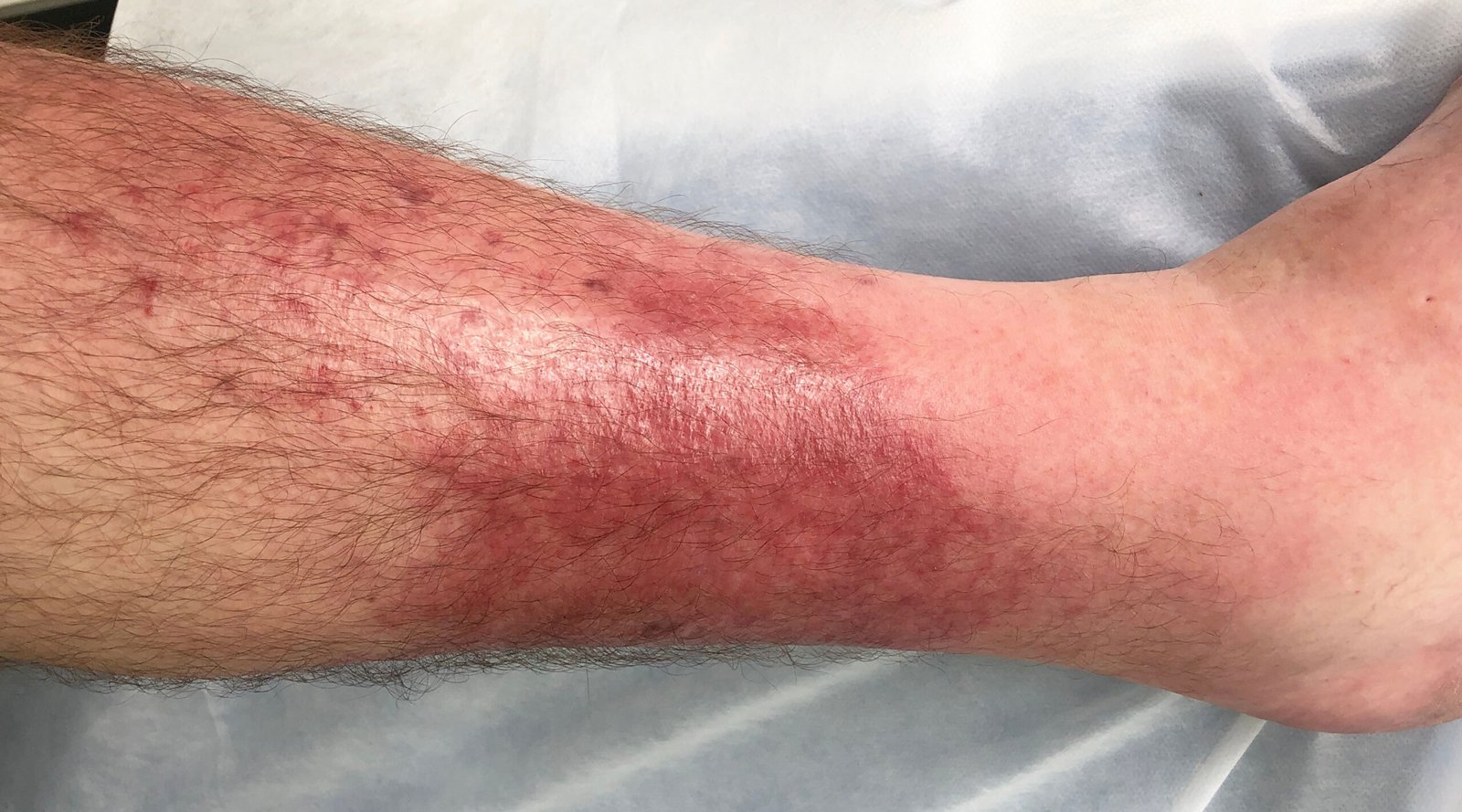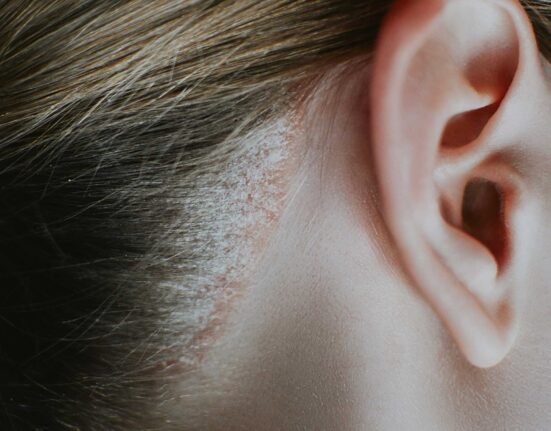Skin Cellulitis: Symptoms, Causes, and Treatment
Skin cellulitis is a serious bacterial infection of the skin and underlying tissues, most commonly caused by Streptococcus (strep) and Staphylococcus (staph) bacteria. It’s an infection that can progress rapidly if not treated properly.
Cellulitis itself doesn’t usually cause itching, although some people may experience mild itchiness as the infection begins to heal.
The infection occurs when bacteria enter the body through cracks, cuts, or small irritations in the skin.
Dry, cracked, scaly, or swollen skin often serves as the main entry point for bacteria. Surgical wounds, puncture wounds, burns, or skin affected by athlete’s foot or dermatitis can also trigger infection.
Although it can appear anywhere on the body, cellulitis most commonly affects the lower extremities, particularly the legs, feet, and toes.
Common symptoms include swelling, pain, redness, and warmth in the affected area. In some cases, symptoms may also include flu-like complaints such as fever above 38°C, chills, sweating, body aches, and fatigue.
If left untreated, cellulitis can become more serious. When bacteria spread into the bloodstream, it may lead to complications such as blood infection (sepsis), abscesses, or deep tissue infections (necrotizing fasciitis).
Recognizing early symptoms and seeking medical help promptly is crucial to preventing these complications.
Maintaining Hygiene to Prevent Skin Cellulitis

Cellulitis often develops on damaged or poorly cleaned skin. To prevent it, it’s important to maintain good skin hygiene through the following steps:
- Wash your hands regularly with soap and warm water.
- Keep fingernails and toenails trimmed and clean.
- Bathe daily and dry the skin thoroughly afterwards.
- Wear clean, dry clothing.
- Properly care for minor wounds to prevent infection.
In its early stages, cellulitis may appear as a slightly discolored and warm area on the skin. Over time, it can become darker, swollen, and tender.
Is Skin Cellulitis Contagious?
Generally, cellulitis is not contagious. However, in rare cases, it can spread if someone with an open wound has direct contact with the infected area of another person.
To reduce risk, avoid touching infected skin without protection and always maintain proper wound hygiene.
Who Is at Risk of Developing Skin Cellulitis?

Several factors can increase a person’s risk of developing cellulitis, such as:
- Open wounds, including cuts, scrapes, or burns.
- Weakened immune system (e.g., due to diabetes, leukemia, or HIV/AIDS).
- Certain skin conditions, such as atopic dermatitis, eczema, athlete’s foot, or herpes.
- Chronic swelling of the legs or arms (lymphedema).
- History of cellulitis, as infections can recur in the same area.
- Being overweight increases the risk of skin inflammation.
Everyday habits like walking barefoot, wearing tight shoes, or failing to clean small wounds promptly can also raise infection risk.
Elderly individuals are generally more vulnerable due to reduced skin elasticity and a weakened immune system.
How to Treat Skin Cellulitis Quickly
Here are some simple home care steps that can help speed up healing:
1. Clean the affected area daily
Gently wash with soap and clean water as part of your daily hygiene routine.
2. Apply a warm compress
Use a warm compress on the infected area to reduce swelling and discomfort.
3. Elevate the affected area
Raise the infected limb to relieve pressure and improve blood circulation.
4. Use bandages or compression stockings
Bandages or compression stockings can help reduce swelling. However, avoid wrapping too tightly to prevent restricted circulation.
Remove them every 10–15 minutes twice a day.
If symptoms do not improve or worsen after 2–3 days (for example, increased redness, pain, or high fever), seek medical care immediately.
Doctors usually prescribe oral or injectable antibiotics to stop the infection. In severe cases, hospitalization may be necessary.
References
Cleveland Clinic. Accessed in 2025. Cellulitis.
Mayo Clinic. Accessed in 2025. Cellulitis.














Leave feedback about this